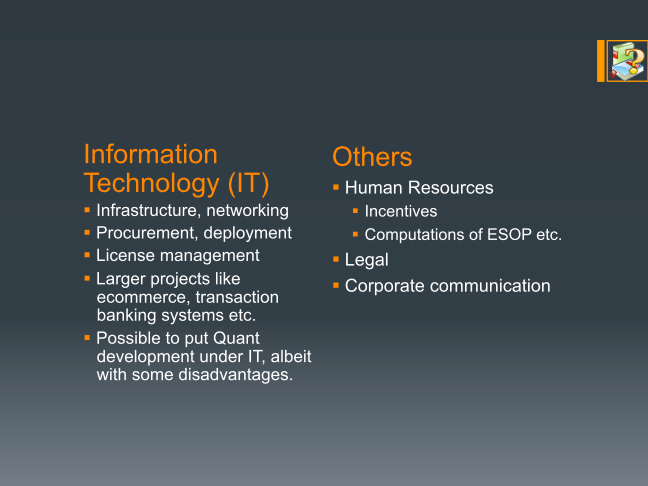We have now completed our discussion on the general structure of a typical investment bank trading arm. We went through the Front-Middle-Back Office divisions and the functional and business units contained within. Note that we looked only at those units that have a bearing on trading and quantitative development activities. Note also that this structure is fluid and may be implemented with different names and hierarchies in different banks depending on their corporate strategies and focus. We presented the trading platform as the enabler or backdrop of most of these activities of the global treasury (where exotics trading activities take place) and the associated business units (that handle various aspects of the trade workflow) mainly because we are looking at the whole thing from the quantitative development perspective.

From this perspective, you see the trading platform as the most important tool (or collection of tools) in the bank. It mediates almost all the interactions among the various business units. Furthermore, as we shall see in future posts, the trading platform defines the trade workflow and lifecycle management. Therefore, it will also become important for the quantitative developers to understand how these business units view trades and the trade booking and management process. Their trade perspectives will have to influence the design of the trading platform.

